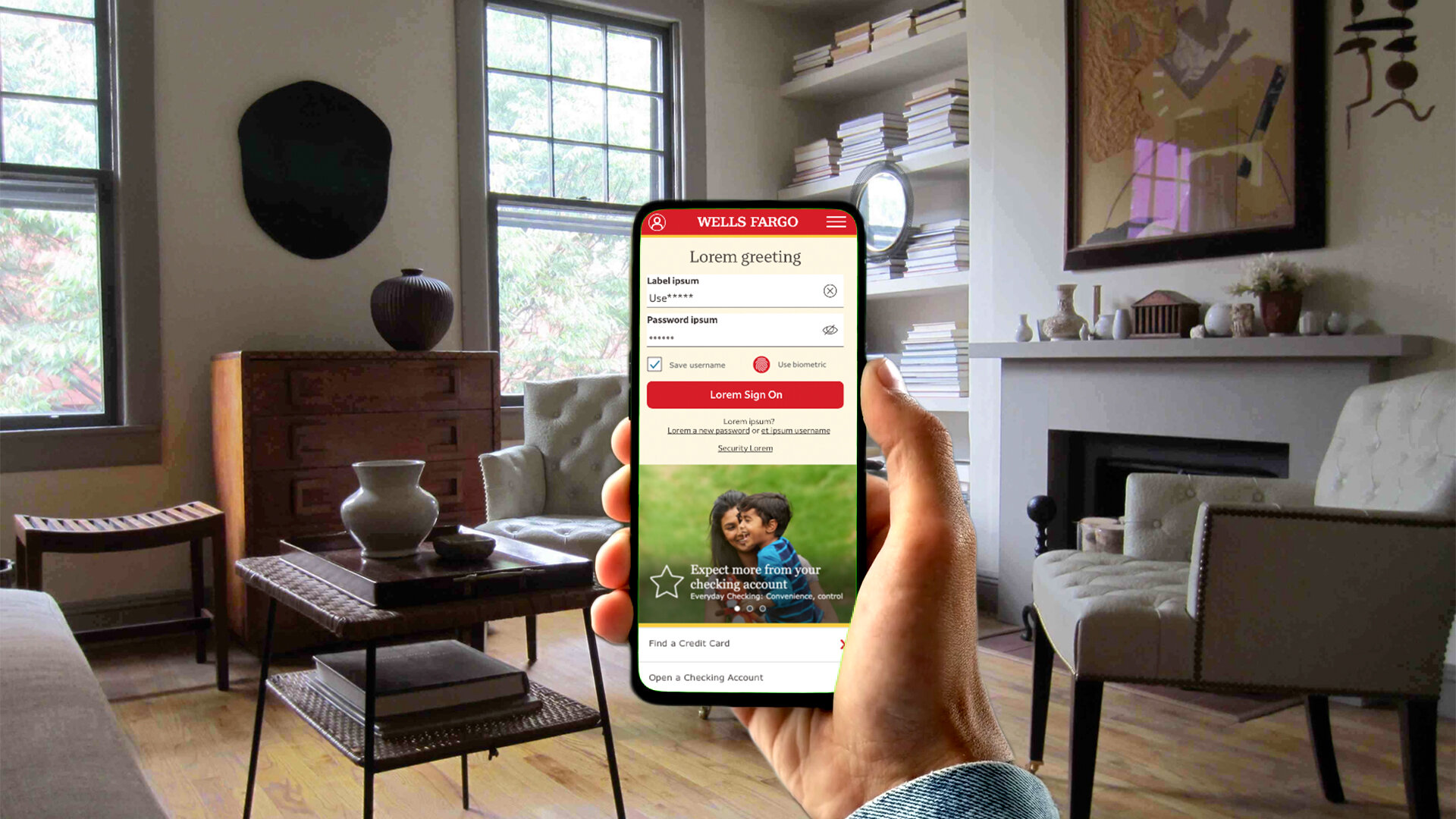Overview
Role:
Lead Product Design & Visual DesignCustomer problem:
Sign on process created friction
Users forget passwordsBusiness goal:
Decrease call center call volume & cost
Modernize the sign-on experienceProcess:
Empathize with & understand the customer problem
Research customer sign-on behaviors
Competitive analysis
Determine success metrics
Design exploration
Stakeholder feedback/approval
IterationSolution:
Improved biometric enablement experience
Hide/reveal password feature
Simplified username & password retrievalImpact:
Increased Biometric Enablement
Maintained security assurance
Reduced call center costs
Process
Research was gathered on customer expectations and experiences related to the mobile sign on journey and user flow. Data showed that users commonly forgot passwords and sign-on credentials resulting in large call volume to Wells Fargo call centers as well as frustration around accessing online banking accounts. This experience did little for Wells Fargo's already strained relationship with customers.
The research, along with competitive analysis, revealed a couple of possible solutions. First and foremost there was a need to increase the awareness of the biometric sign feature. The majority of Wells Fargo customers access online banking via mobile devices. Removing the need to remember one's password for this majority would certainly increase successful sign-on attempts and reduce call center costs.
Secondly, was the opportunity to refine the sign-on flow and username & password retrieval flows to further resolve the customer problem as well as business goals.
Assumption Map
Passwordless alternatives were explored by design, product and engineering stakeholders and narrowed down based on technical feasibility, complexity to customers and security concerns.
Enablement Task Flows
Establishing exactly what the enablement flow needed to include was the crucial first step in understanding what changes needed to be made. Regulatory and legal limitations added additional complexities when designing the new flows.
Biometric Authentication - Enablement Flows
It was important that the enablement (and disablement) flows were easily discoverable, but that they also met legal requirements.
Sign-on Module Iterations
Design iterations were explored and the iterative process fleshed out the evolution of both the credential based sign-on experience and the awareness of biometric sign-on.
The hide/reveal password feature was added, based on research which showed that successful sign-ons had the potential increase of up to 200%.
The existing credential retrieval flow was updated from a combined link experience into two separate direct links: "Forgot Username" & "Create new password".
Education Layer
Increased awareness of biometric sign-on functionality was achieved by utilizing a conditional overlay for customers who had not yet enabled biometric authentication, but whose devices supported it.
Final Implementation
Documentation for hand-off
Red lines were documented and delivered to engineering using invision for pixel perfect implementation
Impact
The iterations were released over three agile sprints. Wells Fargo saw a 7% reduction in call center activity related to username and password related issues and a significant increase in successful sign-ons. Within three months of the latest release and we saw an increase of biometric enablement of 18%.



